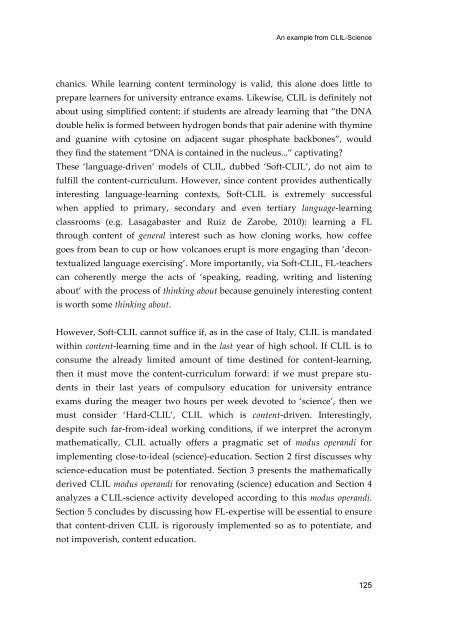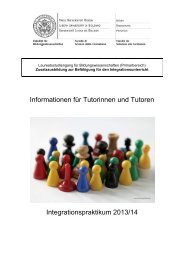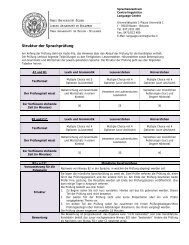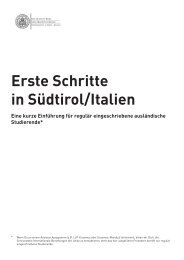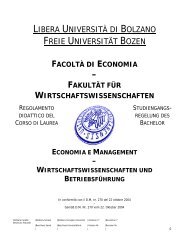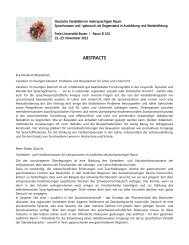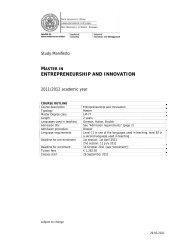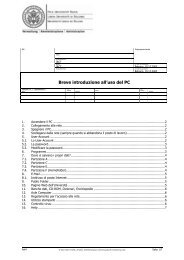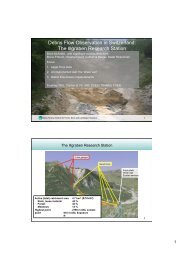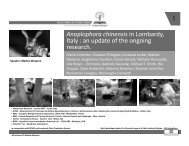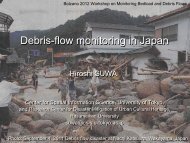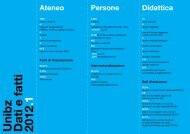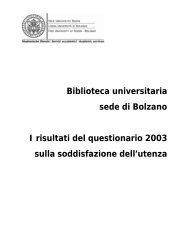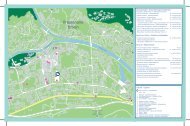Multilinguismo, CLIL e innovazione didattica - Libera Università di ...
Multilinguismo, CLIL e innovazione didattica - Libera Università di ...
Multilinguismo, CLIL e innovazione didattica - Libera Università di ...
You also want an ePaper? Increase the reach of your titles
YUMPU automatically turns print PDFs into web optimized ePapers that Google loves.
An example from <strong>CLIL</strong>-Science<br />
chanics. While learning content terminology is valid, this alone does little to<br />
prepare learners for university entrance exams. Likewise, <strong>CLIL</strong> is definitely not<br />
about using simplified content: if students are already learning that “the DNA<br />
double helix is formed between hydrogen bonds that pair adenine with thymine<br />
and guanine with cytosine on adjacent sugar phosphate backbones”, would<br />
they find the statement “DNA is contained in the nucleus...” captivating?<br />
These ‘language-driven’ models of <strong>CLIL</strong>, dubbed ‘Soft-<strong>CLIL</strong>’, do not aim to<br />
fulfill the content-curriculum. However, since content provides authentically<br />
interesting language-learning contexts, Soft-<strong>CLIL</strong> is extremely successful<br />
when applied to primary, secondary and even tertiary language-learning<br />
classrooms (e.g. Lasagabaster and Ruiz de Zarobe, 2010): learning a FL<br />
through content of general interest such as how cloning works, how coffee<br />
goes from bean to cup or how volcanoes erupt is more engaging than ‘decontextualized<br />
language exercising’. More importantly, via Soft-<strong>CLIL</strong>, FL-teachers<br />
can coherently merge the acts of ‘speaking, rea<strong>di</strong>ng, writing and listening<br />
about’ with the process of thinking about because genuinely interesting content<br />
is worth some thinking about.<br />
However, Soft-<strong>CLIL</strong> cannot suffice if, as in the case of Italy, <strong>CLIL</strong> is mandated<br />
within content-learning time and in the last year of high school. If <strong>CLIL</strong> is to<br />
consume the already limited amount of time destined for content-learning,<br />
then it must move the content-curriculum forward: if we must prepare students<br />
in their last years of compulsory education for university entrance<br />
exams during the meager two hours per week devoted to ‘science’, then we<br />
must consider ‘Hard-<strong>CLIL</strong>’, <strong>CLIL</strong> which is content-driven. Interestingly,<br />
despite such far-from-ideal working con<strong>di</strong>tions, if we interpret the acronym<br />
mathematically, <strong>CLIL</strong> actually offers a pragmatic set of modus operan<strong>di</strong> for<br />
implementing close-to-ideal (science)-education. Section 2 first <strong>di</strong>scusses why<br />
science-education must be potentiated. Section 3 presents the mathematically<br />
derived <strong>CLIL</strong> modus operan<strong>di</strong> for renovating (science) education and Section 4<br />
analyzes a <strong>CLIL</strong>-science activity developed accor<strong>di</strong>ng to this modus operan<strong>di</strong>.<br />
Section 5 concludes by <strong>di</strong>scussing how FL-expertise will be essential to ensure<br />
that content-driven <strong>CLIL</strong> is rigorously implemented so as to potentiate, and<br />
not impoverish, content education.<br />
125


